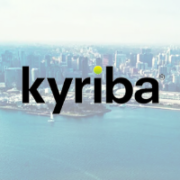The Corporate Treasurer and Blockchain
| 17-08-2016 | Carlo de Meijer |

While it has been widely reported that – despite its disruptive character – the majority of banks think that innovations such as blockchain technology will positively impact their business and are exploring how they can use blockchain to their advantage, it is still largely a grey area for many corporate treasurers. But given the various challenges that corporate treasures are facing today, they also need to pay attention to this ‘cutting-edge’ blockchain technology.
Complex environment
Today’s business environment for corporates that are internationally active can be highly complex from a treasury point of view. The treasury includes basic tasks like cash management, bank relationship management, payments, and corporate investing.
The corporate treasurer strives to achieve optimal working capital utilization to ensure that the financial supply chain efficiently and effectively supports the physical one. It does this by monitoring global cash positions and managing credit facilities across all bank accounts of the group companies to move cash to where and when it is needed.
“Cash management and forecasting are more challenging because of increasing business complexity. The level of complexity is likely to get worse over the next two years”
In the digital era, real-time insight into a company’s global cash positions and cash requirements and the ability to move monies intraday is increasingly needed to support this changing business environment.
Today’s model of international correspondent banking however does not easily facilitate the ability to manage cash in a real-time environment.
Challenges
Corporate treasurers thereby face various challenges.
A first one is to obtain in a timely manner consolidated information of group-wide multi-currency positions across a fragmented banking network. This is needed to optimize the financing mix and duration of funding against expected and actual enterprise cash flows.
A second key challenge is optimizing the automation of “order-to-cash” and “purchase-to-pay” cycles with an optimal rate of straight-through-reconciliation (STR) of cash to accounting.
Need for …..
Cash management and forecasting are more important than ever for a company’s financial success, but they have also become more difficult to execute. And the pressure to provide insightful and proactive cash reporting and forecasting is only likely to grow. Management outside of treasury needs a better understanding of a company’s cash positioning and forecasts.
To execute in this environment, treasury functions will need to find ways to provide management with information on cash positions and cash forecasts faster and with deeper insight.
So where should treasury start, in order to improve forecast quality despite increasing internal and external forces that adverse impact reporting?
Blockchain enters the stage
But there is a technology available to take the pressure off the modern cash management professional: Blockchain. This technology could fundamentally affect the various areas of corporate treasury as it could transform how financial transactions are recorded, reconciled and reported.
The potential applications of blockchain technology for the treasury are vast. They may range from cash management and correspondent banking, to trade finance and documentation, supply chain management, commodity financing and account opening.
Especially for treasury relevant payments, when applying blockchain, these could be executed instantly between the various participants. As the ownership and provenance of transactions can actually be embedded in the blockchain data, blockchain has the potential to be used for mainstream payments, thereby providing a robust and secure framework for verifying transactions.
Benefits
Blockchain could have a number of positive impacts on the transparency, efficiency, cost and risk issues currently associated with corporate treasury. This may bring them various benefits.
- It will allow for improved liquidity management. Blockchain has the potential to enable real-time/instant insight in a corporate’s liquidity position and how quickly they can provide liquidity to their corporate.
- The transparency brought about by blockchain technology between the various players could bring benefits especially for those activities that need multiple controls such as transfer of payments. Such transfers can be done much quicker and in some instances even instantly.
- It will also allow for improved risk management. As the credibility of debtors and creditors is supposed to be known at all participants blockchain will also contribute to more security.
- Treasurers are nowadays under pressure to reduce costs. Blockchain may allow much lower trading costs for banks because much less parties are involved for reconciliation purposes. Some even say it could save banks billions of euros. And if banks could provide their services to corporates at lower costs that might be of great help for treasurers.
- And what about the use of smart contracts, in which lawyers and accountants essentially act as coders. When two parties enter into a transaction together, the accountant/lawyer/coder inputs into the blockchain what the event they have all agreed on. This event will occur automatically. That might contribute to much greater efficiency.
- But also from a financial and business strategy issue, blockchain could bring great benefits. Having a clear picture of assets and cash flows, finance has the ability to make strategic investments in shorter period of time, helping to capitalize on potential investment opportunities and evaluate important future transactions.
Take a longer view
Blockchain has the potential to fundamentally change the treasury function at corporates. For some blockchain is even going to be a game-changer for treasury. The change might not be here yet, but it is coming, and treasurers need to take the long view on it.

Economist and researcher











